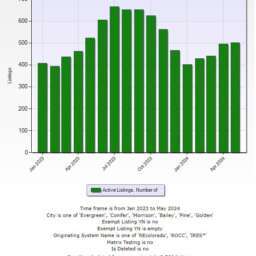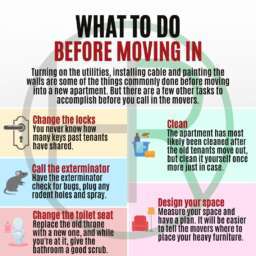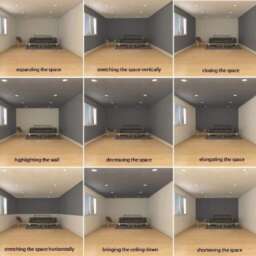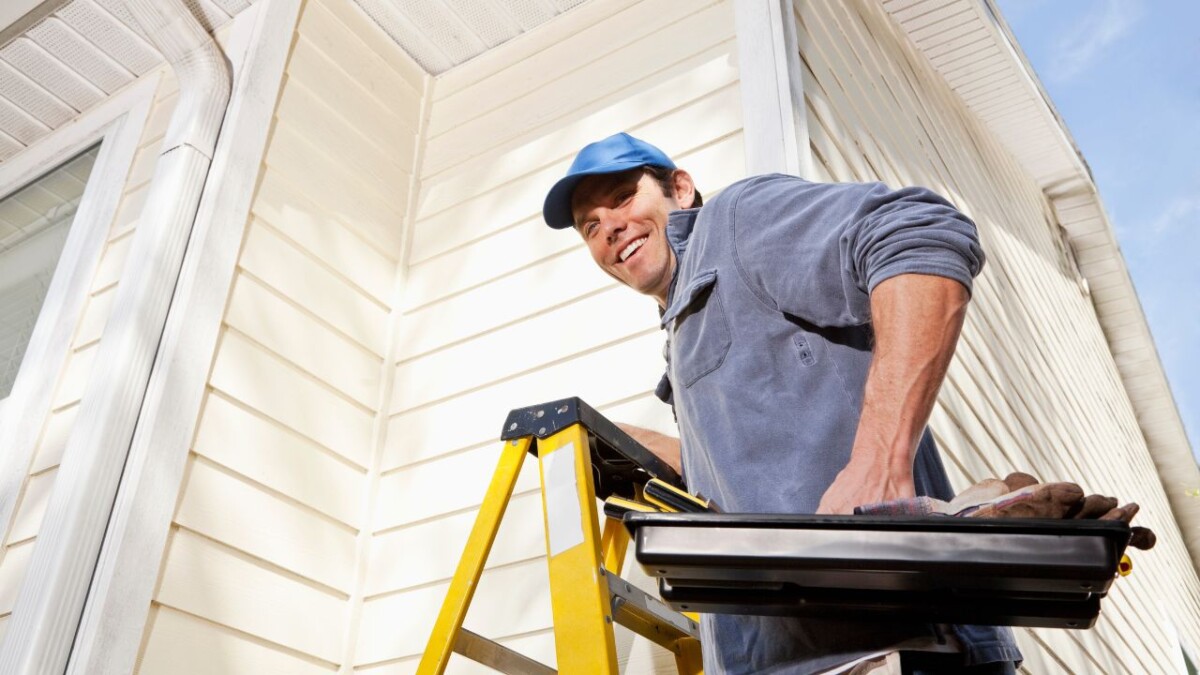DIY Home Repairs: A Step-by-Step Guide
Embarking on DIY home repairs can be both a rewarding activity and an excellent way to save money. This guide is designed to arm you, homeowners and DIY enthusiasts, with the skills required to tackle some of the most common repair tasks around your home.
Assessing the Repair Needs
Start by conducting a thorough inspection of your home to identify any issues. Common areas to check include plumbing fixtures, walls, electrical fittings, and doors. Prepare a checklist of all the repairs needed so you can systematically address each one.
Gathering the Necessary Tools and Materials
Before you begin your DIY journey, it’s essential to equip yourself with the right tools. For most home repairs, the essentials include a hammer, screwdrivers, pliers, a wrench, a tape measure, and utility knives. Ensure you also have materials like caulk, wall patching compounds, and replacement fixtures ready for use.
Step-by-Step Instructions for Common Home Repairs
1. Fixing a Leaky Faucet
A leaky faucet often results from a worn-out washer or O-ring. Turn off the water supply, disassemble the faucet, and replace these components. Remember to reassemble the parts in the same order. Turn on the water supply and test for leaks. If the problem persists, you may need to replace the entire faucet.
Isolating the Problem
To effectively address a leaky faucet, it is crucial to pinpoint the exact cause. Begin by closely examining the faucet. Is the leak originating from the spout or at the base? Leaks from the spout are usually related to internal components like washers or O-rings, while those at the base may signal an issue with the gasket or the valves. By isolating the leak to a specific part, you can make a targeted and efficient repair, saving both time and resources.
Dismantling with Care
Once the source of the leak is identified, the faucet’s components must be carefully dismantled. Lay your tools out within reach, and have a small container on hand to hold tiny, easily misplaced parts. As you remove each piece, it’s helpful to take notes or photographs to ensure you can reassemble them correctly. Pay attention when removing the handle and valve components; this is where most wear-and-tear occurs, and gentle handling can prevent further damage.
Replacing Faulty Parts
With the parts disassembled, inspect them for signs of damage such as cracks, corrosion, or wear. When replacing a washer or O-ring, ensure the new one matches the exact size and thickness to prevent future leaks. If the faucet has a ceramic disc or a cartridge, it is advisable to replace the entire unit. Be wary of overtightening the components upon reassembly which can lead to stripped threads or cracked parts, defeating the purpose of your repair efforts.
By following these thorough steps with a methodical and well-informed approach, your DIY faucet repair will be executed with professional precision. Remember that a successful repair not only stops the leak but also prolongs the life of your faucet.
2. Patching Drywall Holes
Small holes can be fixed with spackling paste and a putty knife. Apply the paste, smooth it out, and sand it down once dry. For larger holes, you may need a patching kit which includes a support structure and joint compound.
Holes Larger Than a Pencil Eraser
For holes larger than a pencil eraser but smaller than six inches, you’ll need to apply a self-adhesive mesh patch. Measure and cut the patch so that it extends beyond the edges of the hole, ensuring stable coverage. Firmly press the patch in place, and apply a thin layer of joint compound over it using a putty knife. It’s imperative to feather the edges into the surrounding wall to create a seamless finish. You may need to apply several layers, allowing each to dry and lightly sanding between applications for the smoothest result.
Encountering Substantial Damage
When encountering substantial damage that requires more than just a simple mesh patch—particularly holes larger than six inches—a more advanced technique is necessary. This involves creating a support system inside the wall to attach a new piece of drywall. Carefully measure and cut a patch that matches the hole, then secure strips of wood or metal as backing inside the wall cavity. Screw the new drywall patch into these supports, and then tape the seams and apply joint compound as before.
Key to Professional-Quality Drywall Repair
The key to professional-quality drywall repair is patience during the finishing process. Once all layers of joint compound are fully dried and sanded smooth, it’s time to apply primer. This step is essential as it ensures that the repair area has an even texture and that the paint will adhere correctly, preventing any telltale signs of repair. After priming, repaint the surface to match the surrounding wall, blending the paint at the edges to make the patch indistinguishable from the rest of the wall. With a methodical approach and attention to detail, you can achieve a repair that flawlessly restores your wall to its original integrity.
3. Replacing a Broken Light Switch
Always start by turning off the circuit breaker. Remove the face plate, then unscrew the old switch. Attach the wires to the new switch and secure it back into the wall before replacing the plate.
Identifying Wire Functions
Careful identification of the wire functions in your light switch is paramount. Typical household switches have three types of wires: the “hot” wire (usually black or red) that carries the electrical current, the neutral wire (usually white) which completes the circuit, and a ground wire (either green or bare copper) for safety. Before you disconnect the old switch, make a note or take a photo of the connections to ensure you attach the wires correctly to the new switch. It’s crucial that you match the wire purpose to the correct terminal on the new switch to prevent electrical mishaps.
Securing the New Switch
Once you’ve established the function of each wire, connect them to the corresponding terminals of the new switch. If it’s a single-pole switch, connect the hot wire to the bottom terminal and the returning wire to the top terminal. For a three-way switch, you may need to refer to the manufacturer’s instructions as the connection setup can vary. After attaching the wires, gently push the switch back into the electrical box and ensure it’s level before you screw it into place. This meticulous care ensures that the new switch will be both functional and aesthetically pleasing.
Restoring Power and Testing
After installing the new switch and replacing the faceplate, it’s time to restore power. Turn the circuit breaker back on and test the new light switch. A successful repair will result in a fully functional switch that operates smoothly without any flickering or strange noises. Remember to test the switch in various positions at different times of the day to ensure it’s working correctly under all circumstances. This final testing phase is critical to confirm your DIY electrical work is both safe and up to standard.
4. Unclogging a Drain
Begin with a plunger. If that doesn’t work, try a drain snake to dislodge the clog. For maintenance, consider a mixture of baking soda and vinegar to keep drains clear.
Assess the Severity of the Clog
The first step in tackling a drain clog is to assess its severity. A slow drain may simply be a result of accumulated hair and soap residue, which can often be remedied with household tools. However, a complete blockage indicates a more serious issue that might require the expertise of a professional. It’s crucial to understand the nature of the clog to determine the appropriate course of action and avoid exacerbating the problem.
Implementing Mechanical Solutions
If a plunger fails to clear the blockage, the next line of defense is to use a hand-held drain snake, also known as a plumber’s auger. Carefully feed the snake down the drain, turning it to catch and pull out obstructions. It is vital to proceed with caution to prevent damaging the pipes. For sinks, removing the P-trap underneath may allow you to clear the debris directly. Always wear protective gloves and have a bucket ready to catch any spillage when performing this task.
Chemical-Free Alternatives for Maintenance
Frequent use of harsh chemical cleaners can damage your plumbing over time. As a safer alternative, a regular maintenance routine using a mixture of baking soda and vinegar can help keep your drains clear. Pour a half-cup of baking soda followed by a half-cup of white vinegar down the drain, then cover it with a wet cloth to contain the reaction. After letting it sit for 15 minutes, flush the drain with hot water. This method is not only environmentally friendly but also gentle on your pipes, leveraging natural chemistry for effective drain maintenance.
5. Repairing a Squeaky Door
Apply lubricating oil to the hinges. If the squeak persists, it may be necessary to replace the pins or the entire hinge assembly.
Evaluating the Hinge Alignment
Before attempting further repairs, it’s pivotal to ensure that the hinges are properly aligned. A misaligned door can lead to undue stress on the hinge and create squeaking sounds. Examine the hinge plates and the door frame for any gaps or unevenness. Tighten any loose screws to secure the hinge plates firmly to the frame. Should the screws not hold due to stripped holes, remove them and fill the holes with wood filler. Once dried, drill a new pilot hole and fasten the screws. A properly aligned door ensures smooth operation and largely prevents squeaking issues.
Addressing Wear and Corrosion
Over time, hinges may wear down or show signs of corrosion, which can be the root of a squeaky door. Carefully inspect each hinge for wear or rust that could be causing friction. If corrosion is noticed, remove the hinge pins and sand them lightly to remove rust, or consider replacing them altogether. For worn-out hinge components, replacing the entire hinge is often the most effective solution. When fitting new hinges, select high-quality materials and corrosion-resistant finishes to prolong the lifespan of the door hardware and reduce the likelihood of future squeaks.
Long-Term Maintenance Tips
To mitigate the recurrence of a squeaky door, periodic maintenance is paramount. Regularly clean and inspect door hinges for dirt buildup or early signs of wear. Apply lubrication sparingly to the hinge pins using a suitable lubricant that is designed for such hardware, ensuring to wipe away excess to prevent dirt accumulation. Moreover, occasionally tighten hinge screws to maintain proper alignment. Emphasizing preventative care will not only extend the life of the door components but also maintain a quiet and efficient home environment.
6. Painting a Room
Prep the area by cleaning walls and covering floors and furniture. Tape off edges, then apply primer followed by at least two coats of paint. Use steady, overlapping strokes for an even finish.
Choosing the Right Paint
Selecting the appropriate paint for your room involves more than just picking a color. Begin by considering the function of the space: high-traffic areas benefit from durable, washable paints, while matte finishes might be more suitable for bedrooms and living areas. Your paint should embody both aesthetic and functional prowess. Opt for low-VOC (volatile organic compounds) paints to ensure better indoor air quality. When in doubt, obtain samples and test them on small sections of your wall to observe how the color appears under different lighting conditions throughout the day.
Expert Application Techniques
The key to a flawless paint job is in the technique. For edges and trim, use a high-quality angled brush to achieve sharp, clean lines. When tackling larger wall areas, a roller can provide efficient and even coverage. Dip the roller in the paint tray, ensuring it is well-coated yet not dripping. Apply the paint in a W-shaped pattern, then fill in the gaps with horizontal strokes. Roll over each section several times to ensure even coverage. Take care to maintain a consistent pressure and stroke direction for a uniform finish.
By following these tips and techniques, you can achieve professional-quality results when painting your room. With proper preparation, paint selection, and application methods, you can give your space a refreshed and revitalized look. Remember to take your time, stay organized, and have fun with the process!
Safety Tips and Precautions
Never underestimate the importance of safety. Wear goggles, masks, and gloves as needed to protect against dust, chemicals, and sharp objects. Read instruction manuals for all tools, especially power tools, to prevent accidents.
DIY Home Projects
Armed with the right know-how and a can-do attitude, DIY home repairs can transform your living space while offering a sense of accomplishment. Always take the time to do these jobs right to build skills that last a lifetime.
Remember, your home is a reflection of your dedication and care. Tackle your repairs confidently and efficiently, knowing that you are elevating your sanctuary—one repair at a time.
Happy repairing, and remember, we’re here to guide you every step of the way!
Michael Clark
It's Nice to Share

























































































Comment, Write a Blog Post, Create Groups, Get Seen!
Comments, Opinions and Facts Go Here...👇
Learn how to tackle common repair tasks around your house. Whether it's fixing a leaky faucet, patching up drywall, or replacing a light switch, we have got you covered. No more calling expensive contractors for simple fixes - become a DIY expert and handle them yourself!
The first step in becoming a DIY home repair expert is assessing the needs of your house. Take a walk around each room and make note of any potential issues that need attention.